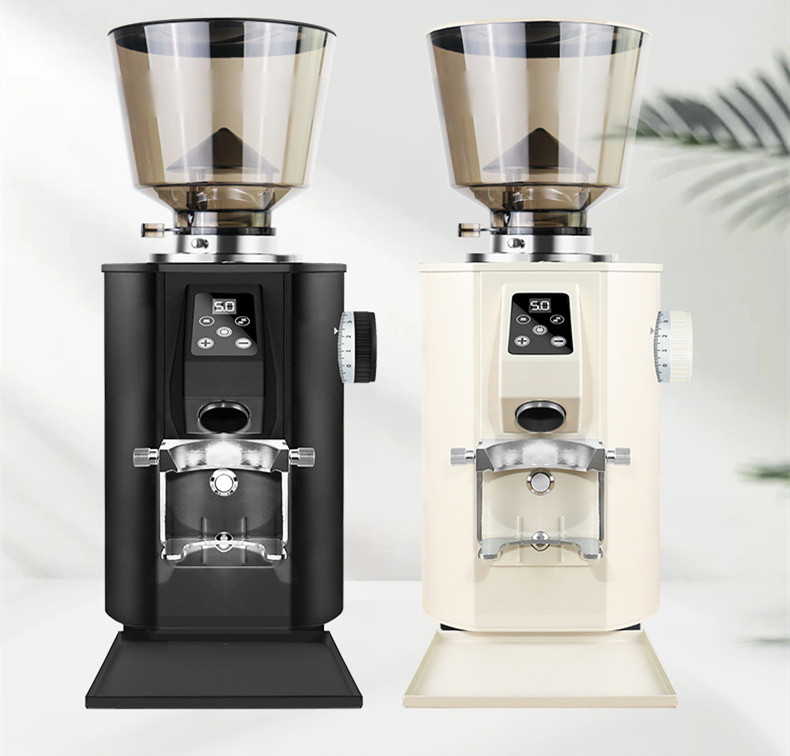Optimizing Coffee Supply Chains Through Strategic Grinding Practices
Aligning Grind Consistency With Roaster Output Stability
Fluctuations in grind quality can disrupt the entire supply chain, from roasters to cafes. Inconsistent grind sizes—such as uneven particles in espresso grounds—lead to unpredictable extraction rates, forcing baristas to adjust brewing parameters frequently. This variability increases the risk of over- or under-extracted coffee, resulting in wasted batches that must be re-roasted or discarded. By standardizing grind settings across all equipment, roasters and cafes ensure that each batch of coffee behaves predictably during brewing. For example, using the same grind size for a specific roast profile across multiple locations reduces the need for on-site adjustments, minimizing waste and ensuring consistent product quality from farm to cup.
Reducing Bean Wastage Through Precision Dosing
Over-grinding or under-grinding beans is a common supply chain inefficiency. Manual dosing methods, such as scooping or estimating by volume, often result in inconsistent amounts of coffee per serving. This inconsistency leads to two issues: first, excess grounds are discarded if a dose is too large, inflating raw material costs; second, under-dosed batches require re-grinding, consuming additional labor and energy. Grinders equipped with automated dosing systems or integrated scales dispense precise amounts of coffee based on weight, eliminating guesswork. This precision ensures that every gram of beans contributes to a finished product, reducing waste and optimizing inventory turnover.
Enhancing Freshness Management via On-Demand Grinding
Pre-ground coffee loses aromatic compounds and flavor complexity within hours of grinding, making it less desirable for high-quality supply chains. However, grinding beans too far in advance—such as for bulk retail packaging—can lead to stale product reaching consumers. On-demand grinding, where coffee is ground only when needed for brewing or packaging, preserves freshness and extends shelf life. This practice is particularly valuable for specialty coffee roasters who prioritize flavor integrity. By integrating on-demand grinding into their workflows, suppliers can reduce returns due to stale product and build a reputation for quality, strengthening customer loyalty and reducing supply chain disruptions.
Streamlining Inventory Turnover With Grind Flexibility
Coffee supply chains often face challenges in managing inventory across diverse brewing methods and customer preferences. A cafe serving espresso, pour-over, and cold brew needs three distinct grind sizes, each requiring separate bean allocations. If demand shifts unexpectedly—such as a surge in cold brew orders during summer—rigid grind settings can lead to overstocking of one type and shortages of another. Grinders with adjustable settings allow suppliers to repurpose beans dynamically. For example, a batch originally ground for espresso can be quickly adjusted to a coarser texture for cold brew, preventing waste and ensuring inventory meets real-time demand. This flexibility reduces the need for emergency purchases or discounted sales of obsolete stock.
Minimizing Storage Costs Through Efficient Grinding
Storing pre-ground coffee requires specialized packaging to prevent oxidation, which adds to logistical complexity and costs. Whole beans, by contrast, remain stable for longer periods and occupy less space. By grinding coffee closer to the point of consumption—whether in a cafe or during retail fulfillment—suppliers can reduce storage requirements and associated expenses. For instance, a roaster shipping whole beans to a distributor who grinds them locally for regional cafes avoids the cost of pre-packaged ground coffee while ensuring freshness. This approach also simplifies supply chain logistics, as whole beans are less prone to damage during transit compared to fragile ground particles.
Supporting Sustainable Sourcing With Grind Optimization
Sustainable coffee supply chains rely on minimizing waste at every stage, from farming to packaging. Inefficient grinding practices, such as producing excessive fines (tiny particles) or boulders (large chunks), reduce extraction efficiency and increase the volume of spent grounds. These byproducts often end up in landfills, contributing to environmental harm. By calibrating grinders to produce uniform particle sizes, suppliers maximize extraction yield per bean, reducing the overall volume of waste generated. Additionally, optimizing grind settings for specific brewing methods ensures that no bean is underutilized, aligning with sustainability goals and appealing to eco-conscious consumers.
Enhancing Collaboration Between Roasters and Retailers Through Grind Data
Modern grinders equipped with sensors or software can collect data on grind time, particle size distribution, and dose accuracy. Sharing this information across the supply chain—from roasters to cafe managers—fosters transparency and collaboration. For example, if a retailer notices inconsistent grind sizes in shipments, they can trace the issue back to the roaster’s equipment calibration or bean quality. Similarly, roasters can use data from grinders to refine their roast profiles for better performance in specific brewing methods. This data-driven approach reduces miscommunication and delays, ensuring that all stakeholders operate with the same quality standards.
Improving Demand Forecasting With Grind-Related Metrics
Grind volume and frequency provide insights into consumer preferences and sales trends. For instance, a sudden increase in fine-grind requests may indicate rising espresso demand, prompting suppliers to adjust their inventory of dark-roasted beans. By analyzing grinding patterns, roasters and retailers can anticipate shifts in the market and allocate resources more effectively. This proactive strategy minimizes overproduction of unpopular products and ensures that high-demand items remain in stock, stabilizing the supply chain and reducing costs associated with excess inventory or stockouts.
Facilitating Faster Onboarding of New Partners With Standardized Grinding Protocols
When expanding into new markets or partnering with new retailers, inconsistent grinding practices can create barriers to entry. Training new staff on regional preferences or equipment variations takes time and resources, delaying product launches. Establishing standardized grinding protocols—such as universal particle size ranges for espresso or drip coffee—simplifies onboarding. New partners can replicate these protocols using their existing equipment, ensuring consistency without extensive retraining. This standardization accelerates market penetration and strengthens supply chain resilience by reducing dependency on individual operators’ expertise.
By focusing on grind consistency, flexibility, and data-driven collaboration, coffee suppliers can optimize their supply chains for efficiency, sustainability, and profitability. These strategies address both operational challenges and strategic goals, ensuring that every stage—from bean sourcing to customer delivery—runs smoothly and adaptably.


